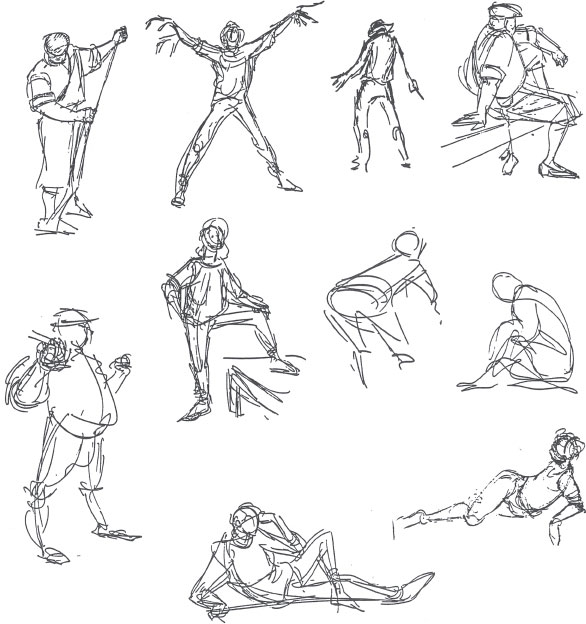We, who are essentially cartoonists by trade, do not use rendering and are rarely called upon to draw a nude figure. Our interest is in the gesture, which is the vehicle used in fitting a character into the role it is called upon to act out. We have drawn variously, dogs, mice, owls, elephants, cats, people, etc., each distinct character with distinct bodily shapes and bodily gestures. So to approach a model with the idea of copying a human figure plus its clothing could be called a waste of time. Our interest is in seeing the differences in each personality and their individualistic gestures and, like a good caricaturist, capture the essence of those differences. When we review the cast of characters in our past films we realize the need to place these individual characteristics with the proper character and to be consistent in their depiction. Holmes’ actions had to be different and distinct from Dawson’s, or their personalities would become a blur. Mickey Mouse had his own personality and his own movements and gestures, which were consistent with his body structure and the personality given him. Goofy, a hundred-fold different in all ways from Mickey, was Goofy because of the same principles used in different ways. There are really only a few principles of drawing but an infinite number of personality traits and gestures. To “hole in” after learning the body structures is to miss the excitement and the satisfaction of using that information to tell the story of life through the nuances of gesture.
We should be taking advantage of the variety of subjects in our sketching sessions. This one has a large midsection with a receding chin. His body tapers down to tiny ankles that seem incongruously inadequate to carry the weight. This one is chunky, even muscular, but dainty in movement — even graceful. This one seems to act out his gestures so that we almost feel his mind working. Should we keep these things in mind rather than deltoids, ulnas, and the seven heads tall syndrome? As Robert Henri said: “seeing into the realities — beyond the surfaces of the subject.”
We must be emotional about our subject whether it has to do with serious matters or with humor. We cannot back off from our emotions — if we do the result will be a mere anatomical reproduction.
A drawing or a scene is not final when a material representation has been made; it is final when a sensitive depiction of an emotion has been made. The significance is not in the story alone, but in the illustration that makes that story come alive. Yes, there is anatomy, form, construction, model, and two or three lines of etceteras, but only as far as those things are expressive of the story.

